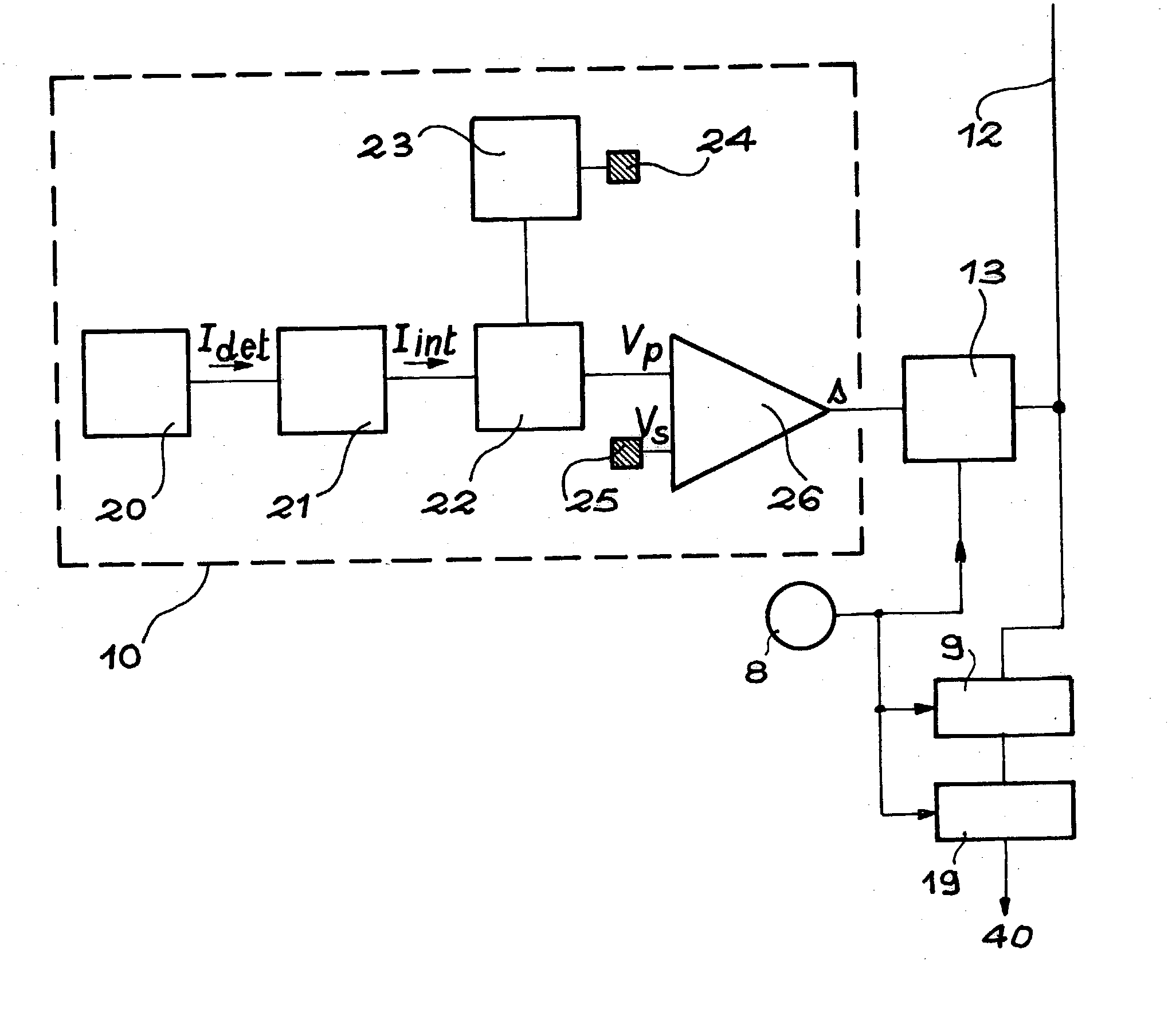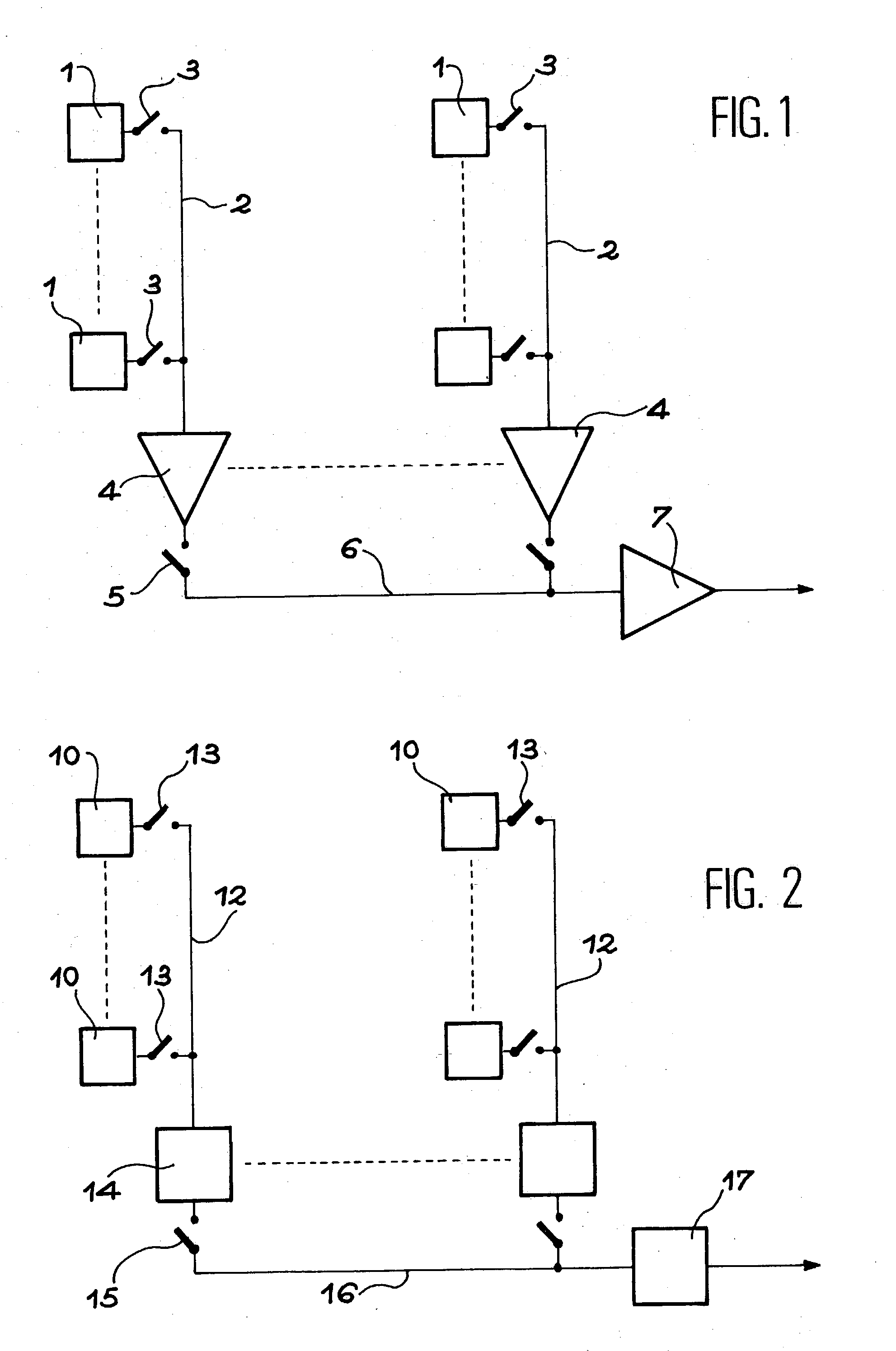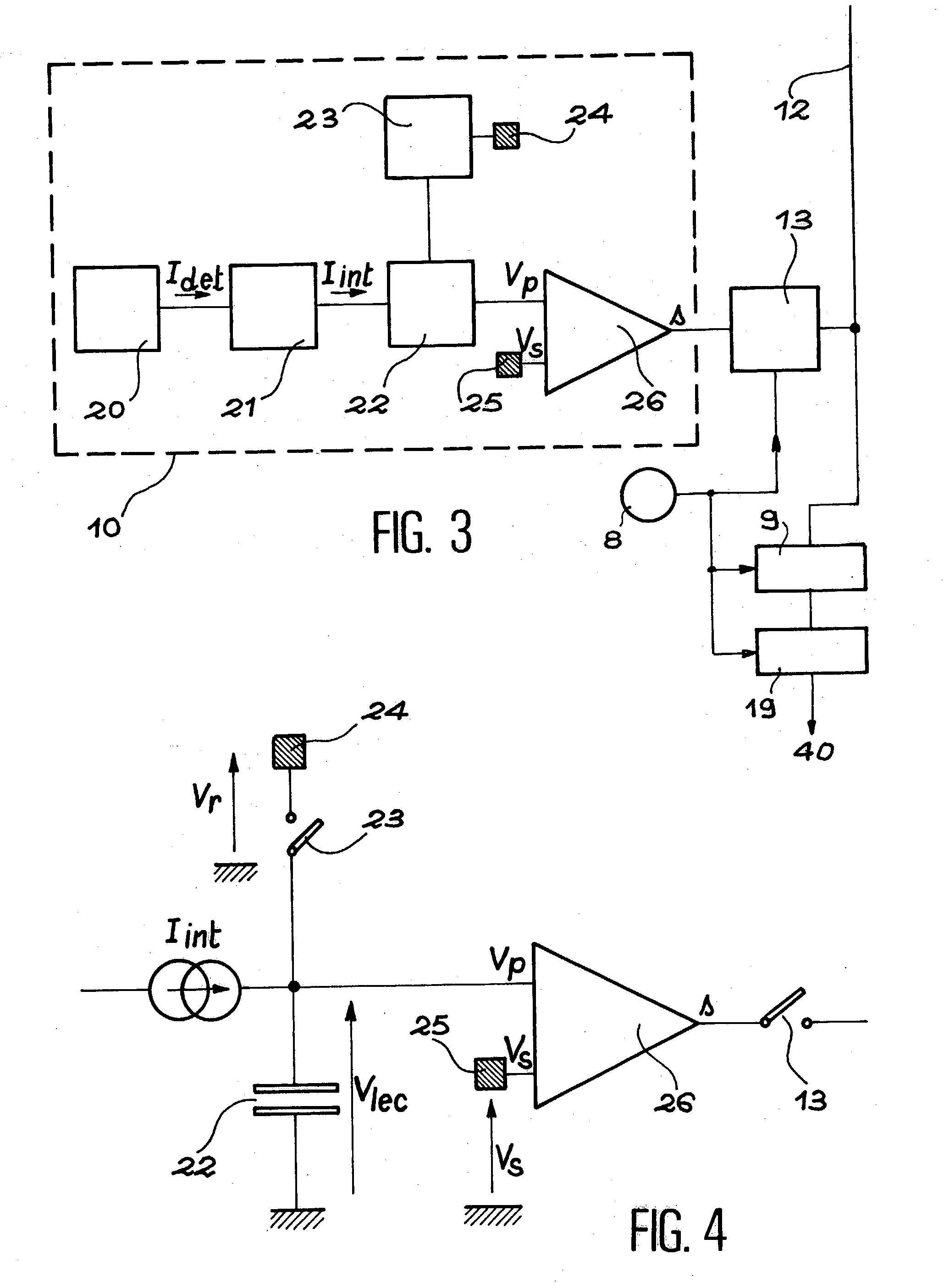Method for converting an analog signal into a digital signal and electromagnetic radiation sensor using same
- Summary
- Abstract
- Description
- Claims
- Application Information
AI Technical Summary
Problems solved by technology
Method used
Image
Examples
Embodiment Construction
[0023] The purpose of the invention is simply to solve the problems of the techniques described above. For this reason, it proposes a procedure for converting an analogue signal representing an electrical quantity into a digital signal, the conversion being performed as close as possible to the photo-detector, that is in an integrating PEL. The procedure of the invention consists in scanning the output state of each PEL, row by row, during a frame onto a single bus for all the PELs in a column.
[0024] More precisely, the invention concerns a procedure for the conversion of an analogue signal representing an electrical quantity into a digital signal, consisting in integrating the analogue signal and comparing the integrated analogue signal with a predetermined threshold value. This procedure is characterized by scanning a logical result acquired at the comparison stage M times, from the start of the integration time until the end of the integration time, a digital signal obtained at t...
PUM
 Login to view more
Login to view more Abstract
Description
Claims
Application Information
 Login to view more
Login to view more - R&D Engineer
- R&D Manager
- IP Professional
- Industry Leading Data Capabilities
- Powerful AI technology
- Patent DNA Extraction
Browse by: Latest US Patents, China's latest patents, Technical Efficacy Thesaurus, Application Domain, Technology Topic.
© 2024 PatSnap. All rights reserved.Legal|Privacy policy|Modern Slavery Act Transparency Statement|Sitemap



